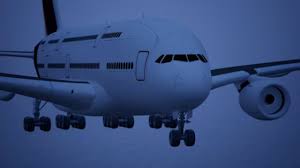Whenever an airline announces an unscheduled diversion, it often raises concern among passengers, families, and aviation followers. That was the case with the United Airlines Flight UA770 emergency diversion, which recently made headlines after the flight had to reroute. Although diversions are relatively rare, they are a vital part of aviation safety. By understanding why these events occur, how airlines respond, and what passengers should expect, travelers can feel better prepared and less anxious when faced with such unexpected situations.
Understanding Emergency Diversions in Aviation
An emergency diversion happens when a flight is forced to land somewhere other than its planned destination. Pilots, in coordination with air traffic controllers and the airline’s operations team, make this call when necessary. The reasons behind such diversions can vary. They may involve a passenger or crew medical emergency, a mechanical or technical issue identified during the flight, severe weather at the arrival airport, or even a potential security issue. In every instance, passenger and crew safety is the main concern.
Why Was United Airlines Flight UA770 Diverted?
The exact cause of the United Airlines Flight UA770 emergency diversion has not yet been confirmed by the airline. Initial information suggests that something occurred mid-flight that required urgent action. Typically, situations like this stem from medical problems, equipment malfunctions, dangerous weather conditions, or safety concerns. Regardless of the underlying reason, the diversion demonstrates that safety comes before schedules and convenience, even when it results in delays.
How Airlines Manage Diversions
When a problem arises in the air, pilots act swiftly to assess risks and decide on the best alternative. They work closely with air traffic control and the airline’s operation center to choose the nearest safe airport. United Airlines, like other leading carriers, relies on detailed protocols designed to minimize danger and disruption. The process often includes assessing the issue, notifying controllers, rerouting the aircraft, and preparing ground support for any passenger, medical, or technical needs once the plane lands.
Passenger Experience During a Diversion
For passengers onboard, the United Airlines Flight UA770 emergency diversion likely began with an announcement from the cockpit. Though unsettling at first, clear communication and crew professionalism generally reassure travelers. During such events, passengers can expect instructions from the flight attendants, calm explanations from the crew, and medical assistance if required. After the aircraft lands, United Airlines staff typically help passengers with rebooking, accommodations if needed, and ensuring checked bags are rerouted correctly.
Why Diversions Are a Safety Advantage
Though diversions can be inconvenient, they highlight aviation’s safety-first approach. In the case of the United Airlines Flight UA770 emergency diversion, the decision to reroute would have reduced risk and prioritized well-being. Benefits include quicker access to medical care, avoiding technical issues that could worsen in flight, steering clear of hazardous weather, and responding swiftly to possible security concerns. These actions prevent small problems from becoming major ones.
How Frequently Do Diversions Happen?
Compared to the millions of flights that take off each year, diversions are not common. Only a very small percentage of flights are rerouted, and when they are, the process is usually orderly and efficient. Most passengers experience only a temporary disruption to their travel plans.
Technology’s Role in Emergency Response
Modern aviation relies heavily on advanced technology to prevent and manage diversions. Aircraft are equipped with monitoring systems that detect issues in real time, while satellite communications allow constant contact with airline operations. United Airlines also coordinates with airports so that, in the event of a diversion, medical staff, maintenance teams, and passenger services are ready to act as soon as the plane lands.
What Travelers Can Learn from UA770
The United Airlines Flight UA770 emergency diversion offers some key lessons for passengers. Travelers should always stay calm and follow crew instructions when unexpected situations occur. Keeping important items such as medication, identification, and travel essentials in carry-on luggage ensures they are available if a diversion happens. Allowing for flexibility in travel schedules helps manage unforeseen delays. Additionally, purchasing travel insurance can cover costs related to diversions or rerouting.
FAQs About United Airlines Flight UA770 Emergency Diversion
Q1: What caused United Airlines Flight UA770 to divert?
The official reason has not yet been announced, but diversions typically result from medical, technical, weather, or security-related issues.
Q2: Are diversions unsafe?
Not at all. Diversions are a protective measure designed to ensure safety.
Q3: Does United Airlines face many diversions?
Diversions are rare and only happen when absolutely necessary.
Q4: What happens to tickets when a flight diverts?
United Airlines usually helps passengers with rebooking, hotel accommodations if needed, and baggage transfers.
Q5: Can passengers get compensation for a diversion?
Compensation depends on the cause and regulations. Diversions for weather or safety usually do not qualify, but airlines often provide goodwill assistance.
Conclusion
The United Airlines Flight UA770 emergency diversion may have caused inconvenience, but it showcased how airlines put safety above all else. Thanks to well-trained crews, advanced technology, and strict procedures, diversions are handled efficiently and effectively. For travelers, the main takeaway is simple: trust the crew, remain calm, and know that every diversion is made to protect lives and ensure safe travel.
